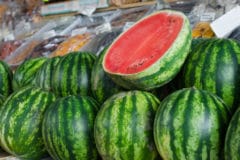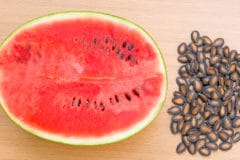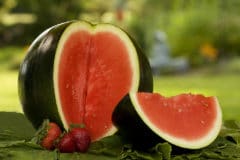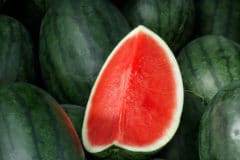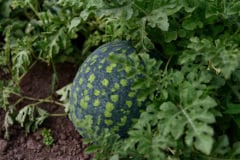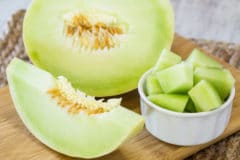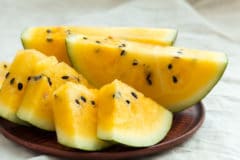Climacteric vs. Non-Climacteric Fruits
All types of fruits are divided into the ripening categories of climacteric and non-climacteric. Fruits such as peaches, plums, bananas and nectarines are climacteric fruits, as they will continue to ripen if picked unripe. This is due to the fact the fruits continue giving off the gasses of ethylene and carbon dioxide.
On the other hand, watermelons are non-climacteric fruits along with strawberries, oranges, cherries and grapefruit. Once harvested the fruit is as ripe as it will ever get. These type of fruits don’t produce vast amounts of the two gasses like climacteric fruits.
In fact, non-climacteric fruits do the vast majority of their ripening while still attached to the plant. Once harvested, they begin their slow process of rotting.
Expert Tip: Fruits such as apples and bananas give off high levels of ethylene gas. To speed up the ripening process of other climacteric fruits, place them near or inside a paper bag with a banana or apple.
You can also speed up the blooming process of a pineapple plant by covering it with a paper bag and placing an apple inside.
Checking for Ripeness
When deciding to grow watermelons, it’s imperative you select a variety that has time to reach full maturity, based on the length of your particular warm growing season.
If your growing season only lasts approximately eight weeks, you don’t want to grow a variety that takes 12 weeks or more to achieve ripeness. Once harvested, your watermelon won’t ripen left on the counter and you’re left with a melon filled with unripe disappointment.
The “Days to Harvest” listed on the seed packet gives a good idea of how long it will take the melon to germinate and reach its peak of full-flavor and ripe deliciousness. Depending on the variety, it can take anywhere from 60 to over 100 days to achieve ripeness.
Regardless of the length of your warm growing season, there’s so many different watermelon varieties with differing days to harvest, there’s bound to be the perfect choice for you.
Some typical signs to look for announcing a watermelon has reached its prime and is ready for harvesting include:
- The curly tendrils on the stem where attached to the watermelon change from light-green to brown and become dry.
- The watermelon’s appearance chances from shiny to dull.
- You can’t penetrate the outer skin with a thumbnail.
- The bottom portion of the melon that touched the ground changes from green to yellowish.
- The heavier the watermelon, the riper it is.
Once your watermelon is ripe and ready to pick, it’s as simple as snipping the melon off the attached vine.
Expert Tip: “Thumping” the watermelon and listening for a dull thud isn’t a good indicator of the melon’s ripeness. Some ripe melons won’t have the “dull thud” sound and sometimes you’ll end up with an overripe and mushy watermelon.


